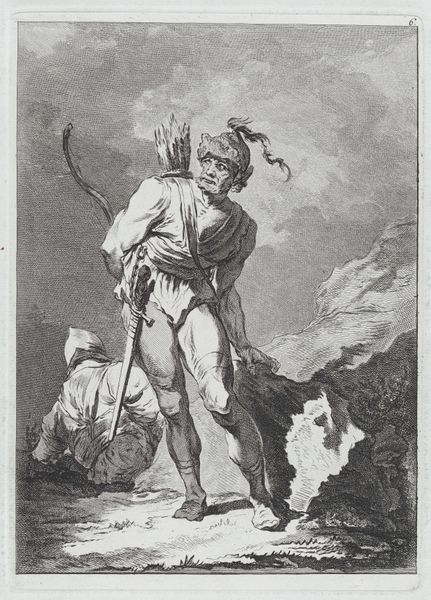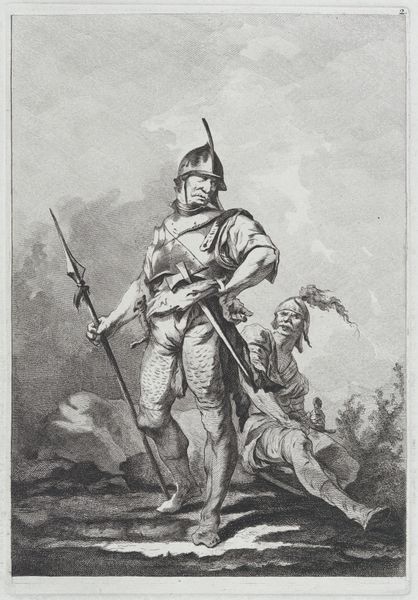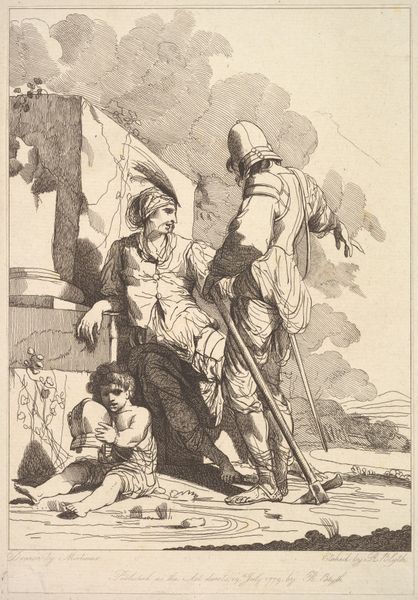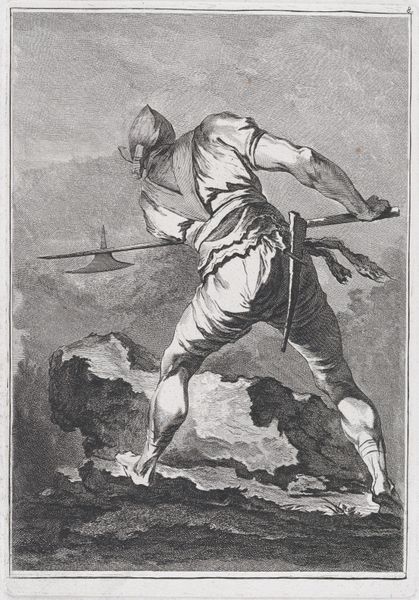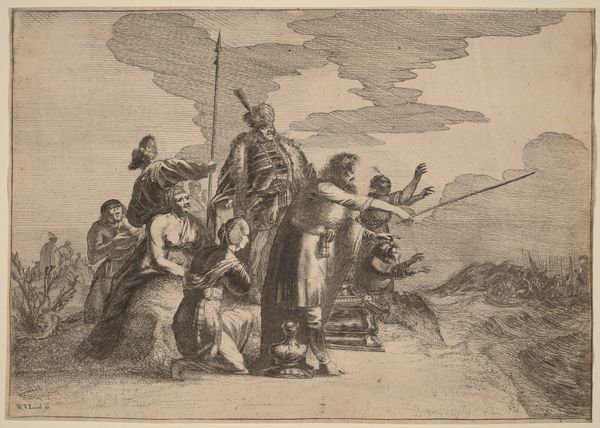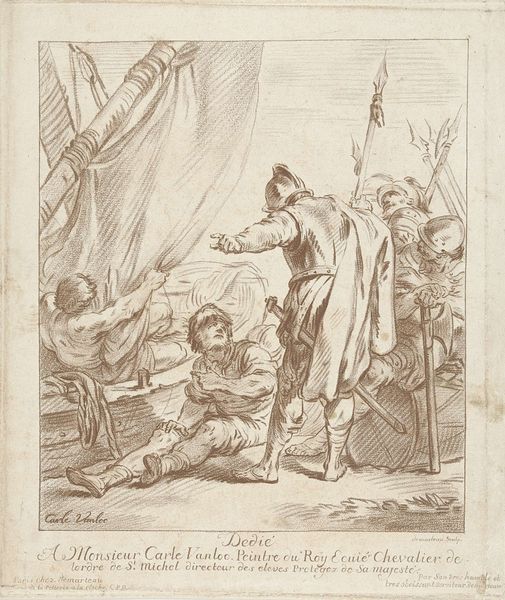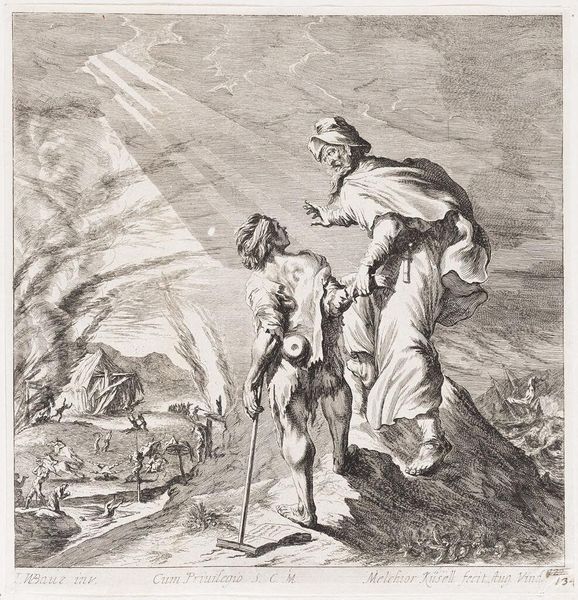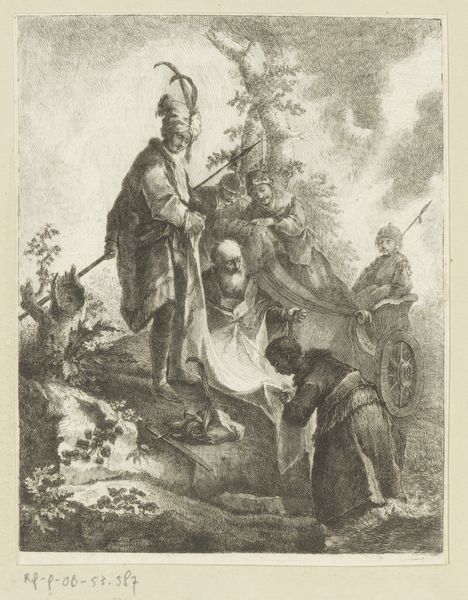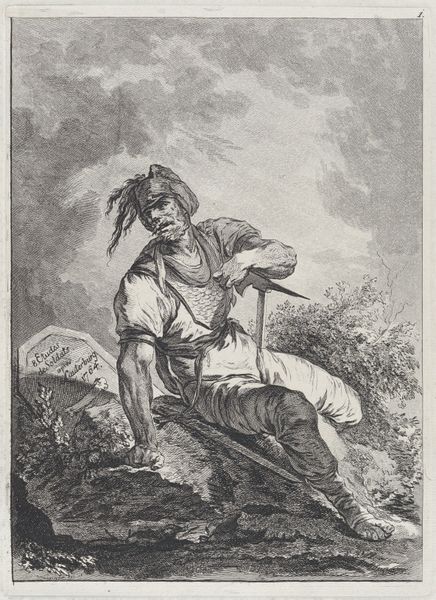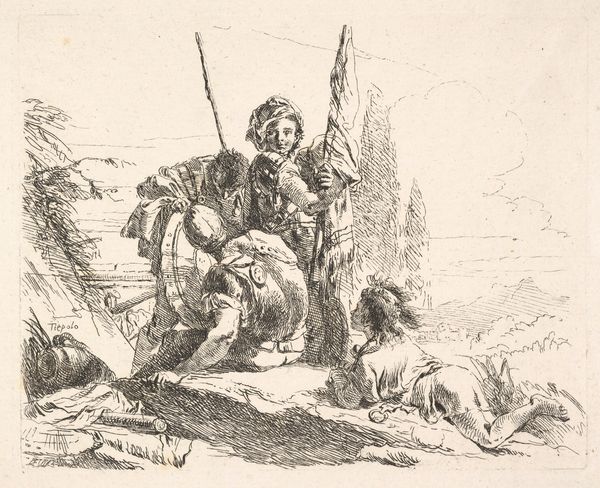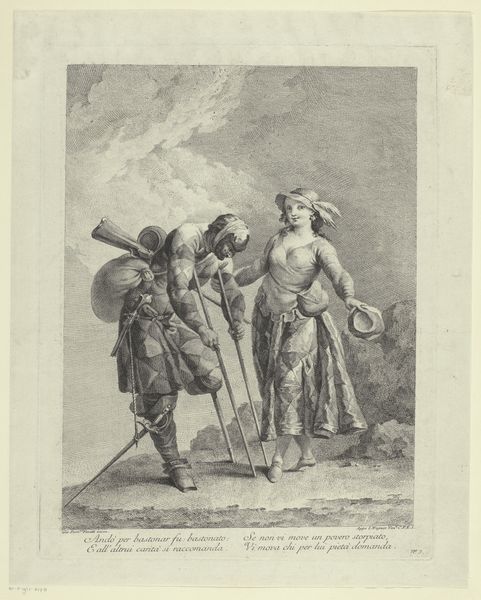
Two Soldiers, One Standing Holding a Flag, One Seated Seen from Behind 1764
0:00
0:00
drawing, print, graphite, engraving
#
portrait
#
drawing
# print
#
figuration
#
soldier
#
men
#
graphite
#
history-painting
#
graphite
#
engraving
Dimensions: Sheet: 18 1/16 × 11 11/16 in. (45.8 × 29.7 cm)
Copyright: Public Domain
Editor: Here we have Matthias Pfenninger’s graphite and engraving piece, "Two Soldiers, One Standing Holding a Flag, One Seated Seen from Behind," created in 1764. The detail is really striking for a drawing. How do you interpret this work? Curator: It's interesting how Pfenninger depicts these soldiers. Look at the figure holding the flag: his expression is stoic, but almost melancholic. The other soldier is seated, his back turned, which speaks volumes about the human cost of conflict. Editor: So it's not glorifying war, then? Curator: Exactly. Instead, I think Pfenninger subtly critiques power structures and military authority. Who are these men fighting for, and at what personal cost? The image almost serves as a meditation on the common soldier caught in the cogs of larger political ambitions, echoing concerns about individual agency within the militaristic society. Does the depiction of the standing figure change your perspective, perhaps considering the work of post-colonial theorists? Editor: That’s insightful! The vulnerability you pointed out makes me think about how their identities as individuals may be swallowed up by their roles. It adds a deeper layer of understanding beyond just a historical representation. Curator: Absolutely. And by depicting the seated soldier from behind, Pfenninger also encourages us to question whose stories are typically centered in historical narratives and whose are marginalized. How often do we actually see things from the point of view of an ordinary person? Editor: I see what you mean. I had focused on it as a representation of a specific time, but now it feels like it could spark discussions about power and representation in any context. Curator: Precisely! It reveals the human narratives and experiences obscured behind grand pronouncements and celebrated milestones. Editor: It really brings those historical events to life. I'll definitely carry that perspective forward! Curator: Wonderful. Looking closer challenges us to expand conventional narratives to accommodate overlooked truths.
Comments
No comments
Be the first to comment and join the conversation on the ultimate creative platform.
